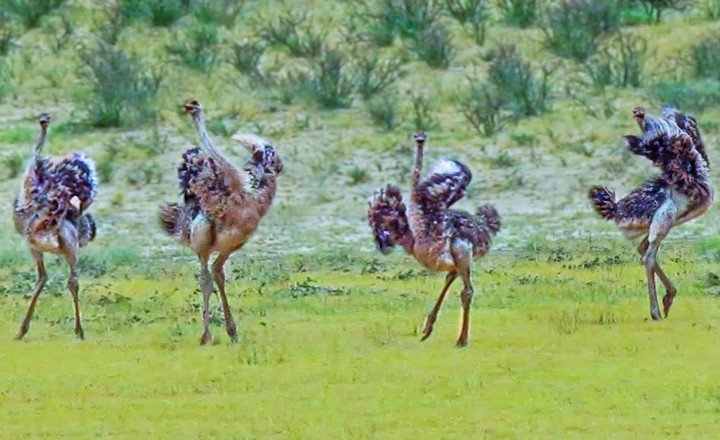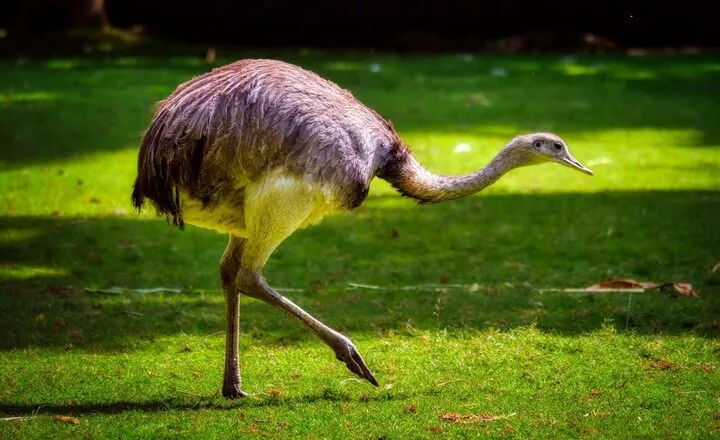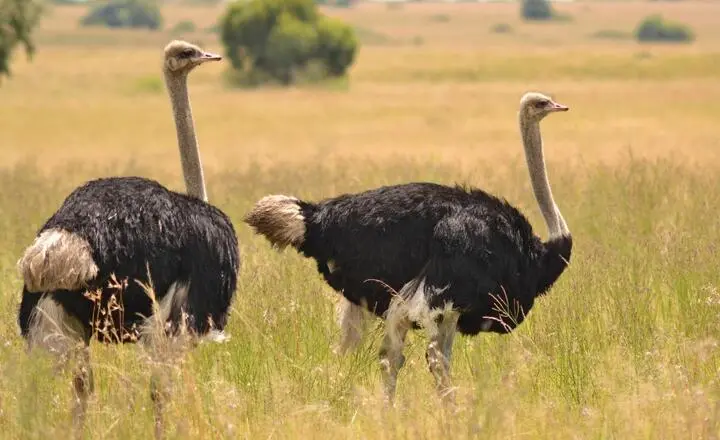Have you ever wondered Why Do Ostriches Dance? These magnificent birds, known for their long necks and powerful legs, possess a hidden talent that has puzzled scientists and intrigued onlookers for centuries.
From the sweeping savannas of Africa to the sprawling plains of Australia, ostriches can be seen engaging in intricate dance routines that seem both graceful and mesmerizing. But what drives these giant birds to bust a move? Is it a display of courtship, a form of communication?
So, Why Do Ostriches Dance?
The meaning of Ostriches dancing is a form of courtship behavior to attract a mate, particularly during the breeding season, which stretches from March to September.
Unlike birds with elaborate plumage or displays, ostriches rely on their dancing skills to capture the attention of females. Wild ostriches engage in intricate dances to showcase their strength and agility, ultimately competing to mate with multiple partners.
While domestic ostriches may not need to dance as frequently due to controlled breeding environments, wild ostriches must actively participate in these displays to secure mating rights.
The dance visualises vitality and genetic fitness, allowing the females to choose their preferred partners based on the performance quality.
The ceremonial dancing among ostriches plays a crucial role in reproductive success and maintaining genetic diversity within the species.
Only Male Ostriches Dance
Male ostriches dance to attract female ostriches during the mating season. The elaborate dance involves flashing their scarlet-coloured beaks, foreheads, necks, and shins, along with producing specific sounds to impress the females.
This behaviour is part of the male ostrich’s courtship ritual to win mating rights with a female. The dancing behaviour of male ostriches is often referred to as a seduction dance, as its main purpose is to attract and impress female ostriches for mating.
During the breeding season, male ostriches become hyperactive and actively roam around females to seduce them through elaborate dancing displays.
How Often Do Ostriches Dance?
Ostriches are known to perform a unique mating dance as part of their courtship ritual. This dance involves the male ostrich spreading its wings and swaying from side to side in an elaborate display to attract a mate.
While there is no specific frequency at which ostriches dance, it is observed that they may engage in this behavior multiple times a day during the breeding season.

The frequency of ostrich dancing can vary depending on factors such as age, health, and availability of potential mates.
Male ostriches need to showcase their strength, agility, and overall fitness through their dance moves to impress females and increase their chances of successful mating.
How do Ostriches Dance?
Ostriches have a unique and fascinating mating dance ritual that combines movements and displays to attract a mate.
The male ostrich will crouch down and alternate, bringing his contrasting wings forward seductively, while also walking backward and forward to add a touch of flair to the dance.
This elaborate courtship display aims to gain the attention of the female ostrich, who may respond by holding her wings out, bobbing her head low, and opening and closing her beak as a sign of interest.
It’s important to note that male ostriches put much effort into their dancing and displays to establish dominance and win mating rights.
The successful performance of the foot dance by the male ostrich can further impress the female and lead to successful insemination.
Why do Female Ostriches not Dance?
Female ostriches do not dance because, in the ostrich mating ritual, the male ostriches perform intricate and elaborate dance displays to attract a mate.
These dances are a way for male ostriches to showcase their strength, agility, and overall fitness to potential female partners.
The females evaluate the male’s performance and choose their mates based on these displays rather than having to engage in similar behaviors themselves.

Female ostriches have the power of choice when it comes to selecting a mate, as they are the ones who ultimately decide which male they want to mate with.
There is no need for female ostriches to participate in dancing or any other elaborate courtship behaviors.
Is There a Specific Breeding Season for the Ostrich?
The breeding season for ostriches can vary depending on the region and environmental factors. While the traditional breeding season is often observed between March and April, it is not uncommon for ostriches to breed outside of this timeframe.
The footage taken in December may indicate that these particular ostriches are exhibiting behavior outside of the typical breeding season, which is not unusual in the animal kingdom.
They are known to be polygamous animals, with males mating with multiple females within a harem.
How can you Differentiate Between Male and Female Ostriches?
Male and female ostriches can be differentiated by their physical characteristics. Males are typically black with gray necks that turn bright pink during breeding season, while females have a paler brownish color.
Males are larger and more robust than females, with weights ranging from 100 to 130 kg and heights of 2 to 2.75 meters. Another distinguishing feature is the coloration of their wings and tails, with males having predominantly white wings and a pale chestnut tail.

Male ostriches can be identified by their larger size, dark coloration with gray necks turning pink during breeding season, white wings, and chestnut tail.
Females are smaller in size with a paler brownish coloration. These physical differences make it relatively easy to distinguish between male and female ostriches in the wild or in captivity.
How long Does an Ostrich egg Take to Incubate?
Ostrich eggs typically take between 35 to 45 days to incubate. Both the male and dominant female ostriches share the responsibility of keeping the eggs warm and safe.

This cooperative parenting approach is crucial, as it helps maintain the optimal temperature range of around 35 to 36.9 degrees Celsius, which is essential for the embryos‘ development.
The dedication of ostrich parents is remarkable; they take turns sitting on the eggs and carefully rotate them to ensure even heat distribution.
Conclusion
The peculiar dancing behavior of ostriches serves multiple purposes in their social and reproductive lives. Through these elaborate displays, ostriches communicate their vitality, strength, and suitability as potential mates.
The synchronized movements also help to establish hierarchies within the group and maintain social cohesion. Despite our initial amusement at their dance routines, it is clear that ostriches have evolved this behavior for significant evolutionary advantages.
FAQs
Do Ostriches bond with humans?
Ostriches are not typically known for bonding with humans in the same way that domesticated animals like dogs or horses do.
How intelligent are Ostriches?
Ostriches are known to be intelligent birds with a range of cognitive abilities. They have excellent memory, problem-solving skills, and social intelligence. They are capable of learning and adapting to new situations, making them quite resourceful in their environment.
How do Ostrichs move?
Ostriches are large flightless birds known for their unique way of moving. They have long, powerful legs that allow them to run at speeds of up to 45 miles per hour, making them the fastest land bird in the world.
How fast is an ostrich?
They can reach running speeds of up to 45 miles per hour (72 kilometers per hour) in short bursts, making them the fastest birds on land.
